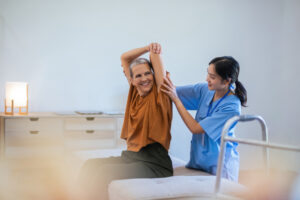As we age, it becomes increasingly important to prioritize our physical and mental health. One of the key ways to do this is through regular exercise and fitness. Fitness for seniors is not just about looking good or staying in shape, but rather about maintaining overall health and well-being. Exercise has been proven to have numerous benefits for seniors, both physically and mentally. In this article, we will explore the importance of fitness for seniors and highlight the many benefits that exercise can bring.
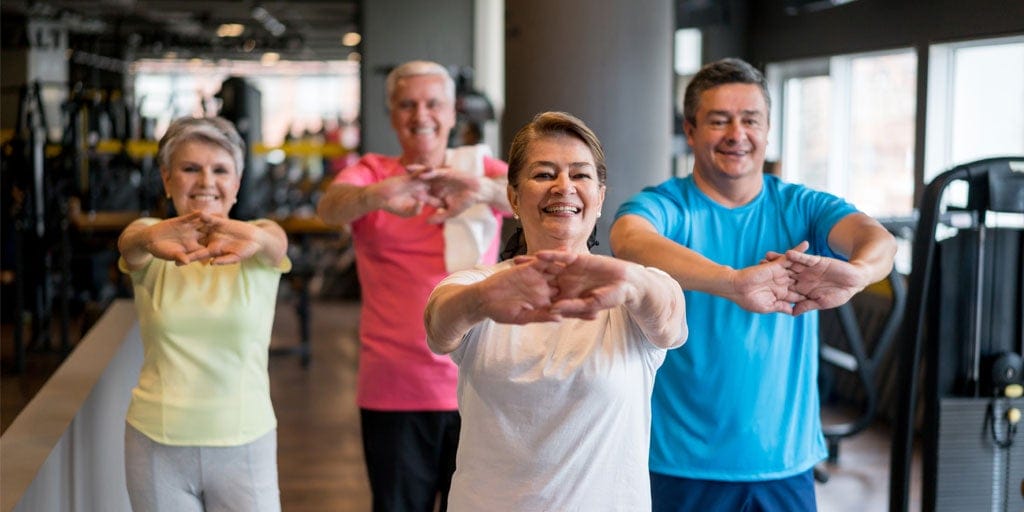
The Benefits of Exercise for Seniors: Physical and Mental Health
Regular exercise has a multitude of benefits for seniors. From a physical standpoint, exercise helps to improve strength, balance, and flexibility. As we age, our muscles naturally weaken and our bones become more brittle, making us more prone to falls and injuries. By engaging in regular exercise, seniors can strengthen their muscles and bones, reducing the risk of falls and fractures.
Exercise also has a positive impact on mental health. It has been shown to reduce stress, anxiety, and depression in seniors. Physical activity releases endorphins, which are known as “feel-good” hormones that boost mood and promote a sense of well-being. Additionally, exercise has been linked to improved cognitive function in seniors. It can help to enhance memory, attention span, and overall brain health.
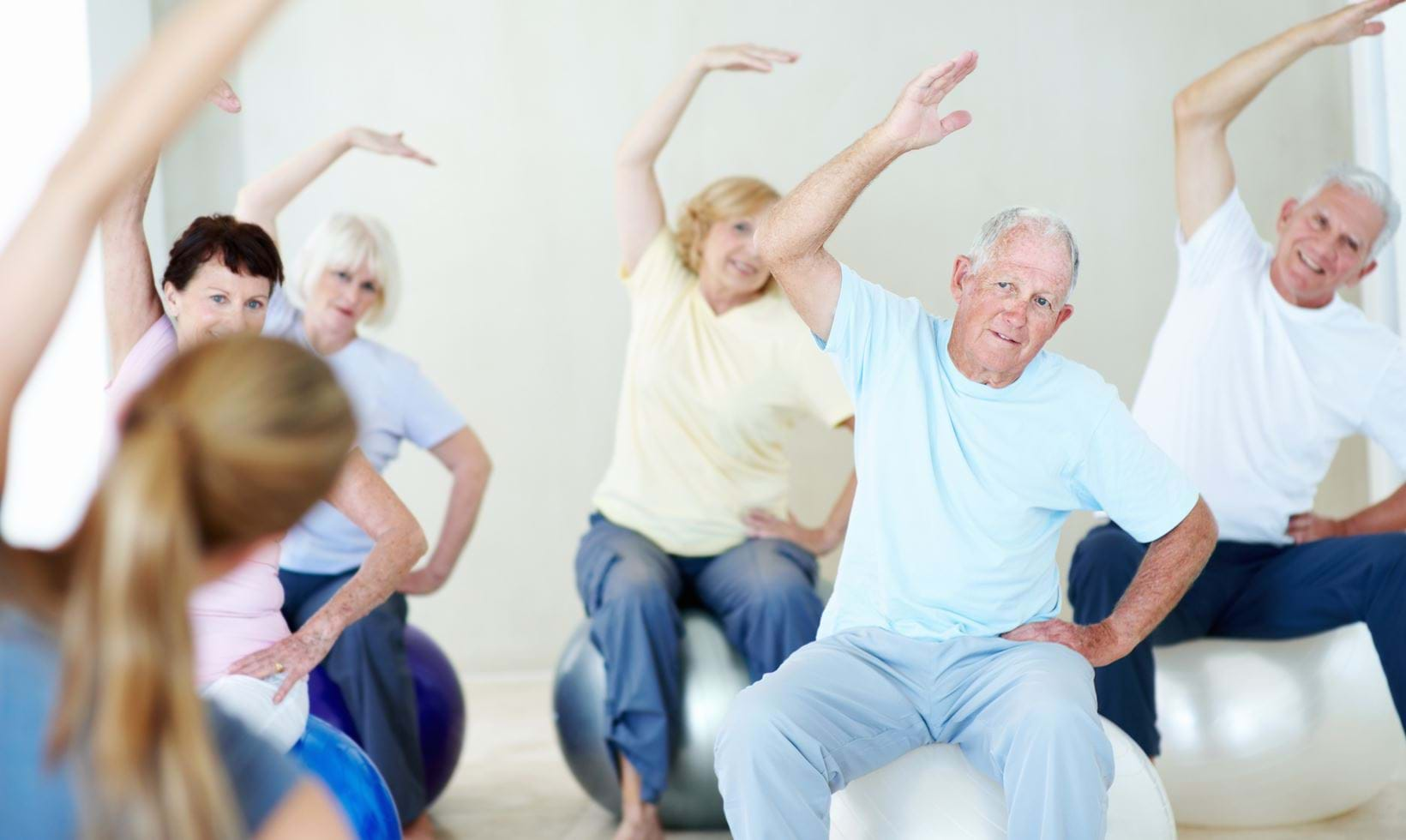
Types of Exercise for Seniors: Strength, Cardio, and Flexibility Training
When it comes to senior fitness, it is important to incorporate a variety of exercises into your routine. This includes strength training, cardio exercises, and flexibility training.
Strength training involves using resistance or weights to build muscle strength. This can be done through exercises such as lifting weights or using resistance bands. Strength training helps to improve muscle tone and increase bone density, reducing the risk of osteoporosis.
Cardio exercises are those that get your heart rate up and increase your breathing. This can include activities such as walking, swimming, or cycling. Cardio exercises help to improve cardiovascular health, increase stamina, and burn calories.
Flexibility training involves stretching exercises that help to improve range of motion and prevent muscle stiffness. This can include activities such as yoga or Pilates. Flexibility training helps to improve balance and coordination, reducing the risk of falls.

Safety Considerations for Senior Fitness: Avoiding Injury and Health Risks
| Safety Considerations for Senior Fitness | Avoiding Injury and Health Risks |
|---|---|
| Warm-up and Cool-down | 5-10 minutes of light cardio and stretching before and after exercise |
| Proper Footwear | Supportive shoes with good traction to prevent falls |
| Hydration | Drink water before, during, and after exercise to prevent dehydration |
| Balance Exercises | Improve balance and reduce fall risk with exercises like standing on one foot |
| Strength Training | Build muscle to improve overall health and prevent injury |
| Flexibility Training | Stretching to improve range of motion and prevent injury |
| Medical Clearance | Consult with a doctor before starting a new exercise program |
While exercise is beneficial for seniors, it is important to prioritize safety to avoid injury and health risks. Before starting any new exercise program, it is recommended to consult with a healthcare professional, especially if you have any pre-existing health conditions.
Some common health risks and injuries that seniors should be aware of when exercising include joint pain, muscle strains, and heart problems. It is important to start slowly and gradually increase the intensity of your workouts. Listen to your body and stop if you experience any pain or discomfort.
It is also important to stay hydrated during exercise and take breaks as needed. Seniors should also be mindful of their surroundings and exercise in a safe environment to avoid falls or accidents.

Creating a Senior Fitness Plan: Setting Realistic Goals and Tracking Progress
When it comes to senior fitness, it is important to set realistic goals and track your progress. This helps to keep you motivated and allows you to see the progress you are making.
Start by setting specific, measurable goals that are achievable for your current fitness level. For example, you might aim to walk for 30 minutes three times a week or complete a certain number of strength training exercises.
Once you have set your goals, track your progress by keeping a fitness journal or using a fitness app. This allows you to see how far you have come and provides motivation to keep going. It also helps you to identify areas where you may need to make adjustments or set new goals.
Remember that progress may be slow and that it is important to be patient with yourself. Celebrate small victories along the way and focus on the positive changes you are making to your health and well-being.
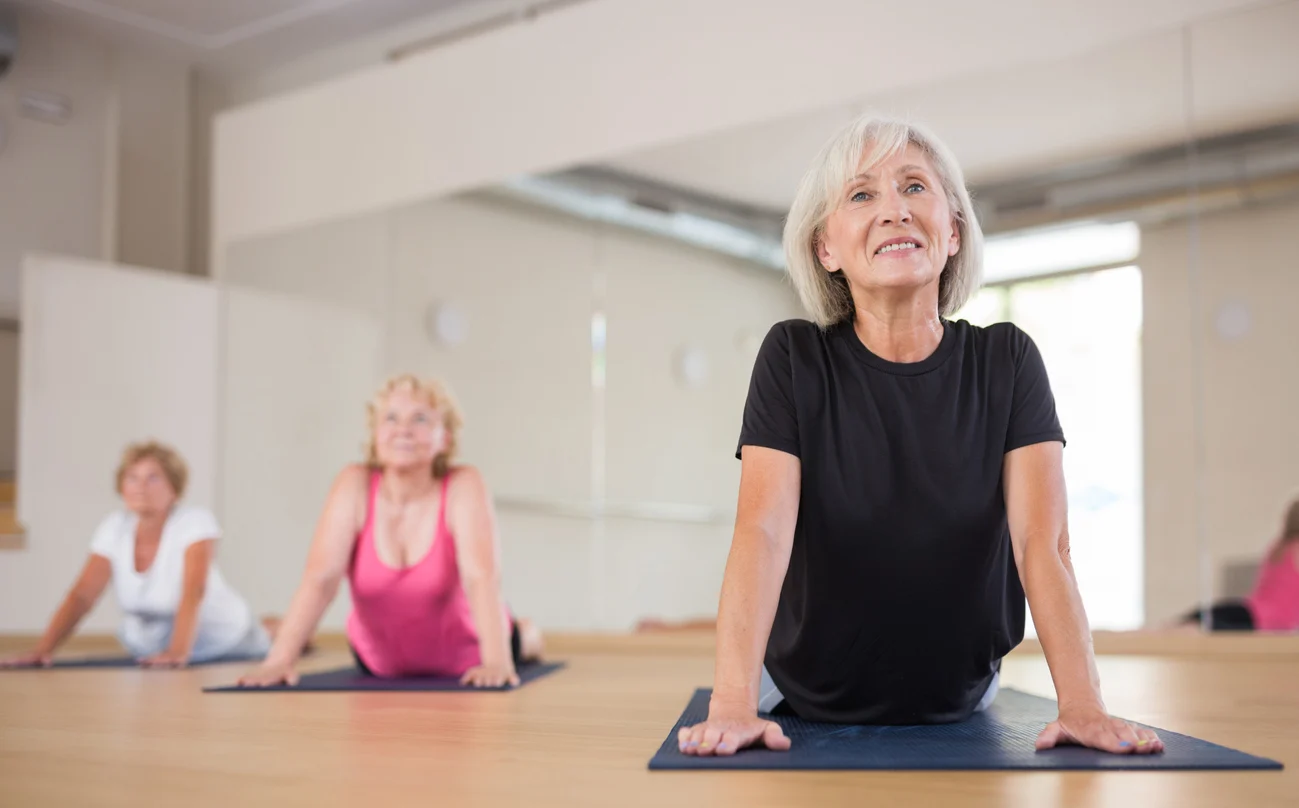
Overcoming Barriers to Senior Fitness: Motivation, Time, and Accessibility
There are several common barriers that seniors may face when it comes to fitness, including lack of motivation, time constraints, and accessibility issues. However, with some strategies and planning, these barriers can be overcome.
To stay motivated, find an exercise routine that you enjoy and that fits your interests and abilities. This could be joining a group class or finding a workout buddy to exercise with. Setting goals and tracking progress can also help to keep you motivated.
Time constraints can be a challenge for many seniors, especially those who have busy schedules or caregiving responsibilities. However, it is important to prioritize your health and make time for exercise. This may involve scheduling workouts into your calendar or breaking up exercise into shorter sessions throughout the day.
Accessibility issues can also be a barrier for seniors, especially those with mobility limitations or who live in areas without access to fitness facilities. However, there are many options available for exercising at home or in the community. This could include using exercise videos or apps, participating in virtual workouts, or finding accessible outdoor spaces for walking or other activities.
Social Aspects of Senior Fitness: Group Classes and Support Networks
The social aspect of senior fitness is often overlooked but is incredibly important for overall well-being. Engaging in group classes or finding a support network can provide motivation, accountability, and a sense of community.
Group classes offer the opportunity to meet new people who share similar interests and goals. They provide a supportive environment where you can exercise together and encourage each other along the way. Group classes also often have qualified instructors who can provide guidance and ensure that exercises are done safely and effectively.
If group classes are not accessible or preferred, consider finding a support network of friends or family members who can exercise with you or provide encouragement. This could involve setting up regular walking dates, joining a sports team, or participating in virtual fitness challenges together.
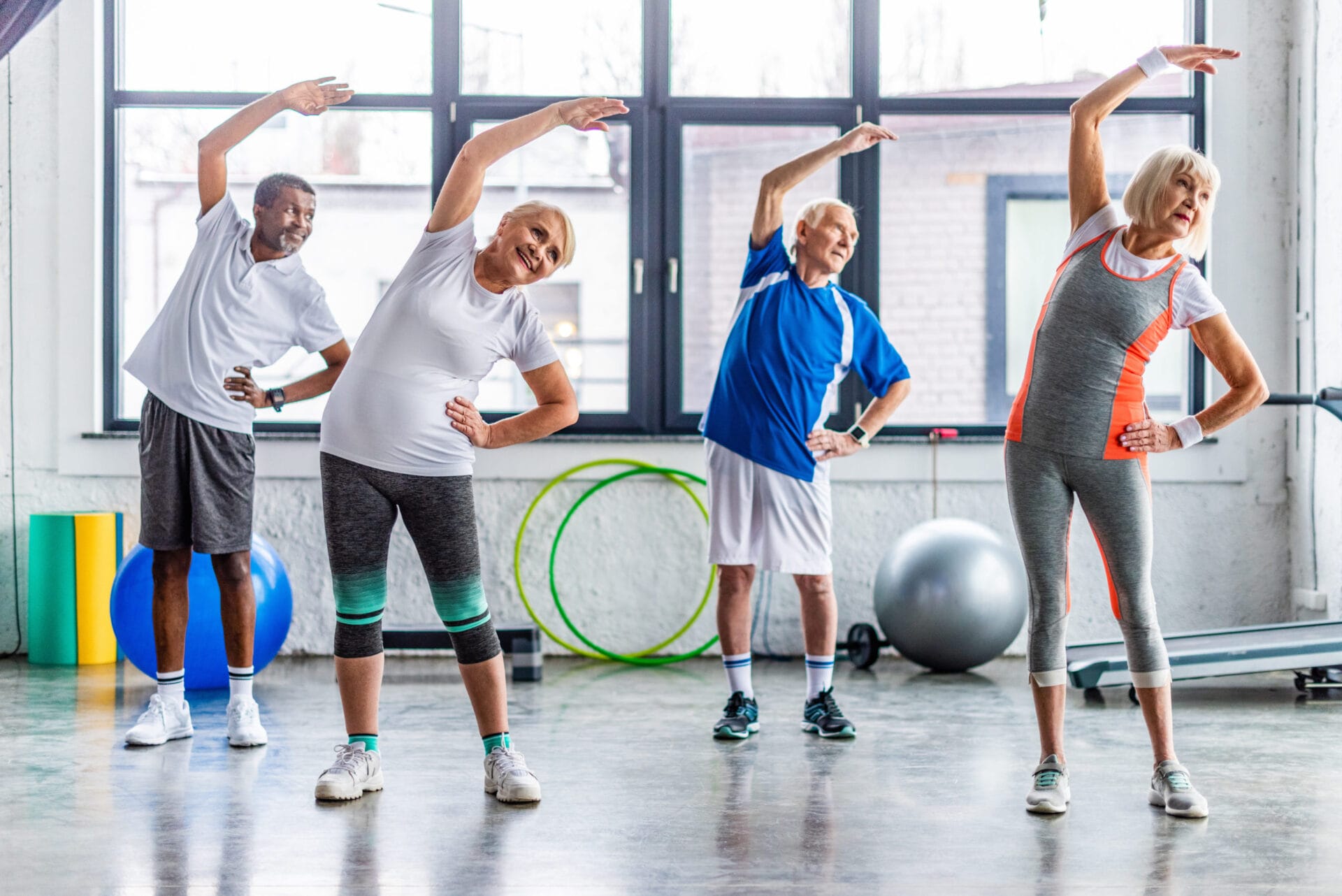
Nutrition and Hydration for Senior Fitness: Fueling the Body for Optimal Performance
Proper nutrition and hydration are essential for senior fitness. Eating a balanced diet that includes a variety of fruits, vegetables, whole grains, lean proteins, and healthy fats provides the necessary nutrients to fuel your body for exercise.
It is important to consume enough calories to support your activity level and maintain a healthy weight. Seniors may have different nutritional needs than younger adults, so it is recommended to consult with a healthcare professional or registered dietitian for personalized guidance.
Hydration is also key for optimal performance during exercise. Seniors may be at a higher risk of dehydration due to changes in thirst sensation and kidney function. It is important to drink water before, during, and after exercise, and to listen to your body’s cues for thirst.
The Role of Technology in Senior Fitness: Apps, Wearables, and Virtual Workouts
Technology has become an increasingly important tool in senior fitness. There are now countless apps, wearables, and virtual workouts available that can enhance your fitness routine.
Fitness apps can help you track your workouts, set goals, and provide guidance on exercises and nutrition. They often include features such as workout reminders, progress tracking, and social sharing options. Some popular fitness apps for seniors include MyFitnessPal, Fitbit, and Nike Training Club.
Wearables such as fitness trackers or smartwatches can provide real-time feedback on your activity level, heart rate, and sleep quality. They can help you stay motivated by setting daily step goals or sending reminders to move throughout the day.
Virtual workouts have become increasingly popular, especially during the COVID-19 pandemic. Many fitness studios and trainers now offer online classes that can be accessed from the comfort of your own home. This provides flexibility and accessibility for seniors who may have limited mobility or prefer to exercise in a familiar environment.

Senior Fitness as a Key Component of Healthy Aging
In conclusion, fitness is a key component of healthy aging. Regular exercise has numerous benefits for seniors, both physically and mentally. It helps to improve strength, balance, and flexibility, reducing the risk of falls and injuries. Exercise also has a positive impact on mental health, reducing stress and improving cognitive function.
When it comes to senior fitness, it is important to incorporate a variety of exercises into your routine, including strength training, cardio exercises, and flexibility training. Safety should always be a priority, and seniors should consult with a healthcare professional before starting any new exercise program.
Setting realistic goals and tracking progress can help to keep you motivated and allow you to see the progress you are making. Overcoming barriers such as lack of motivation, time constraints, and accessibility issues can be achieved through strategies such as finding an exercise routine you enjoy, prioritizing your health, and exploring different options for exercising.
The social aspect of senior fitness should not be overlooked, as group classes and support networks can provide motivation, accountability, and a sense of community. Proper nutrition and hydration are also essential for optimal performance during exercise.
Technology can enhance senior fitness through apps, wearables, and virtual workouts. These tools provide guidance, motivation, and real-time feedback on your progress.
In conclusion, seniors should prioritize fitness as a key component of their overall health and wellness. By engaging in regular exercise and making healthy lifestyle choices, seniors can age gracefully and maintain their independence for years to come.
If you’re interested in senior exercise, you may also find this article on transportation services for the elderly near you helpful. It provides valuable information on how to ensure safe and reliable transportation for senior citizens. Whether it’s getting to their exercise classes or medical appointments, having access to transportation services specifically designed for seniors can greatly enhance their quality of life. Check out the article here to learn more.




